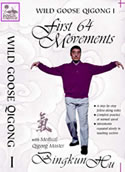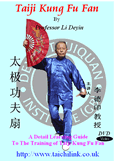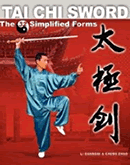Daodejing, Laozi or
Tao Te Ching by Lao Tzu
Indexed by English, Spanish, and Wade-Giles Romanization
Indexing by Michael P. Garofalo, M.S.
A typical webpage created by Mike Garofalo for each one of the 81 Chapters of the Tao Te Ching (Daodejing)
by Lao Tzu (Laozi) includes 20 different English translations or
interpolations for that Chapter, 3 Spanish translations for
that Chapter, the
Chinese characters for that Chapter, and the Wade-Giles and Hanyu Pinyin
Romanization of the Mandarin Chinese words for that Chapter. Each webpage for one of the 81 Chapters of the Tao Te Ching includes extensive
indexing by key words and terms in English, Spanish, and the Wade-Giles Romanization. Each webpage on a Chapter of the Daodejing includes recommended
reading in books and websites, a detailed bibliography, some commentary,
research leads, translation sources, and other resources for that Chapter.
Chapter and Thematic Index (Concordance) to the Tao Te Ching by Lao Tzu
English Language Daodejing Translators' Source Index
Spanish Language Daodejing Translators' Source Index
Ripening Peaches: Taoist Studies and Practices
Taoism: A Selected Reading List
One Old Taoist's Final Journey
Here is an example of some of the translations and/or interpolations for:
Tao Te Ching by Lao Tzu
Daodejing by Laozi
Chapter 10
Here is my indexing of Chapter 10:
English and Chinese (Wade-Giles) Terms:
Physical and Bodily Soul, Chi or Breath or Vital Force (ch'i), Washing or
Cleanse (ti), Youthfulness, Mental Clarity,
What is Possible, What Can Be Done,
Impartiality, Bird, Spontaneity, Wholesome Personality, Kind or Loving or
Caring (ai), Separation or Parting (li), Spirit or Soul or
Spiritual (ying), Vision or Perception or Insight (lan), Natural Breathing,
Close or Shut (ho), One or Unity or Together (yi), Intelligent
Activity, Self-Control,
Vital Breath,
Understanding or Awareness (ming), Cleanse the Mind, Virtue, Leadership,
Chi Kung or Qigong, Progress or Advance or Grow (ch'ang), Meditate, Love, Cleansing the Mind,
Impurities, Hold or Keep (tsai), People (min), Govern (chih),
Country (kuo), Nurturing, Gentle or Tender or Soft (jou), Female,
Can or Able to (nêng), Clean or Polish or Wipe (ch'u), Newborn or
Infant (ying), Question or "?" Interrogative (hu), Passive, Cleanliness,
Cause or Bring About (chih), Cunning or Cleverness (chih),
Concentrate or Gather or Focus (chuan), Governing, Embrace or Carry (pao),
Faults or Flaws or Blemish (ts'u), Animal Nature or Body or Vitality or
Physical Being (p'o), Feed or Nurture (ch'u), Purify, Pure or
Clear or Clear Minded (pai), Gate or Door (mên), Dominate or
Control (tsai), Without or Free of (wu), Open (k'ai),
Mother Bird or Female (tz'u), Four Directions or Four Quarters (ssu),
Child or Baby or Innocent (erh), Heaven or Natural (t'ien), Possibilities Through the Dao,
Produces or Gives Life (shêng), Without Acti0n (wu wei), Become or
Act or Do (wei), Claim or Possess (yu), Profound or Deep or Hidden
(hsüan), Virture or Power (tê),
能為
Términos en Español: Fuerza Vital, Lavado, Limpieza, Juventud,
Claridad Mental, ¿Qué es posible, ¿Qué se Puede Hacer, Imparcialidad, Pájaro,
Espontaneidad, Personalidad Sana, Amar, Cuidar,
Separación, Espíritu, Alma Espiritual, Vision, Percepción,
Perspicacia, Respiración Natural, Cerrar, Apagar, Uno, Unidad, Junto,
Actividad Inteligente, Autocontrol, Aliento Vital, Entendimiento,
Conciencia, Limpiar la Mente, Virtud, Liderazgo, Progreso, Crecer, Meditar,
Impurezas,
Mantener, Guardar, Personas, Gobierno, País, Nutrir, Suave, Dócil, Femenino,
Puede, Limpie, Polaco,
Recién
nacido, Lactante, Pregunta,
Interrogativo, Pasivo, Causar, Provocar, Astucia, Concentrado, Reunir, Enfoque,
Abrazar, Llevar, Fallos, Defectos,
Naturaleza Animal, Cuerpo, Purificar, Puro, Portón, Puerta, Dominar,
Mujer, Cuatro Vientos, Niño, Bebé, Inocente, Cielo,
Posibilidades, Produce, Vida, Ley, Reclamación, Posser, Profunda, Oculto.
"One can keep the camp whole of the
animal soul, by embracing the One alone,
Can bring tenderness by guarding
the breath, and be as an infant child,
One can wash and be clean, and,
knowing the deep, can be spotless and undefiled,
And, loving the people can rule
the land with a rule that is scarcely shown.
Can one not open and close his
heavenly gates like a bird on her nest?
When his intellect broadens on
every side may its light not remain unknown?
Quickening, feeding, producing,
must he still claim the fruit as his own?
To uplift all, and yet rule not,
is virtue the deepest and best."
- Translated by
Isaac Winter Heysinger, 1903, Chapter 10
"Carrying vitality and consciousness, embracing them as one, can you keep from parting?
Concentrating energy, making it supple, can you be like an infant?
Purifying hidden perception, can you make it flawless?
Loving the people, governing the nation, can you be uncontrived?
As the gate of heaven opens and closes, can you be impassive?
As understanding reaches everywhere, can you be innocent?
Producing and developing, producing without possessing, growing without domineering: this is called mysterious power."
- Translated by
Thomas Cleary,
1991, Chapter 10
"By clinging to the One with both your spiritual and physical souls, can you prevent them from becoming divorced?
By concentrating your breath until you become soft, can you be like an infant?
By cleansing your secret mirror, can you make it without blemish?
In loving the people and ruling a state, can you be without action?
In opening and closing the natural gates, can you be like a hen?
In penetrating the four quarters with your intelligence, can you be without knowledge?"
- Translated by
Jan J. L.
Duyvendak, 1954, Chapter 10
"Can you keep the spirit and embrace the One without departing from them?
Can you concentrate your vital force and achieve the highest degree of weakness like an infant?
Can you clean and purify your profound insight so it will be spotless?
Can you love the people and govern the state without cunning?
Can you play the role of the female in the opening and closing of the gates of Heaven?
Can you understand all and penetrate all without taking any action?
To produce things and to rear them,
To produce, but not to take
possession of them,
To act, but not to rely on one's own ability,
To
lead them, but not to master them.
This is called profound and secret
virtue."
- Translated by
Chan Wing-Tsit,
1953, Chapter 10
載營魄, 抱一能無離乎?
專氣致柔, 能嬰兒乎?
滌除玄覽,
能無疵乎?
愛民治國, 能無知乎?
天門開闔,
能為雌乎?
明白四達, 能無知乎?
生之畜之.
生而不有.
為而不恃.
長而不宰.
是謂玄德.
- Chinese characters, Tao Te Ching, Chapter 10
tsai ying p'o, pao yi nêng wu li hu?
chuan ch'i chih jou, nêng ying erh hu?
ti ch'u hsüan lan, nêng wu tz'u hu?
ai min chih kuo, nêng wu chih hu?
t'ien mên k'ai ho, nêng wei tz'u hu?
ming pai ssu ta, nêng wu wei hu?
shêng chih ch'u chih.
shêng erh pu yu.
wei erh pu shih.
ch'ang erh pu tsai.
shih wei hsüan tê.
- Wade-Giles (1892) Romanization, Tao Te Ching, Chapter 10
"creative spirit
vital soul
wondrous bodymind
can you combine these into one phase
and gently hold onto it
one phase one part one moment
can you commune with
and direct the elemental force of life
and enter into the rebirth of gentleness
and be like a newborn
can you wash and cleanse your mystic inner vision
while clearing it of the refuse left behind you
ordinary sight
is it possible for you to stay out of your own way
while being your own leader
can you stomp the earth
look to the heavens while being receptive
passive
possessed of quietude
can you be knowledgeable and clever
and regard it as whimsical
create and nourish
let all creation be the worlds
not your own
have fun when you work
work when you have fun
be a leader without appearing to be
and you will personify fine uncarved wood
in the hands of a master carpenter
can you guess who this master is."
- Translated by John Bright-Fey,
2006, Chapter 10
"Unir cuerpo y mente en un conjunto
del que no puedan disociarse.
Equilibrar el Chi hasta hacerlo
tan armónico como el de un recién nacido.
Purificar la vision interna hasta
dejarla libre de todo vicio.
Querer al pueblo y gobernar la nación
practicando el Wu-Wei.
Abrir y cerrar las puertas del cielo
siendo como la Mujer Misteriosa.
Conocer y comprenderlo todo
usar la inteligencia.
Engendrar y criar,
Alimentar y educar
engendrar sin apropiarse,
obrar sin pedir nada a cambio,
guiar sin dominar,
esta es la Gran Virtud."
- Translation from
Wikisource, 2013,
Capítulo
10
"Can you hold
the door of your tent
Wide to the firmament?
Can you, with the simple stature
Of a child, breathing nature,
Become, notwithstanding,
A man?
Can you continue befriending
With no prejudice, no ban?
Can you, mating with heaven,
Serve as the female part?
Can your learned head take leaven
From the wisdom of your heart?
If you can bear issue and nourish its growing,
If you can guide without claim or strife,
If you can stay in the lead of men without their knowing,
You are at the core of life."
- Translated by
Witter Bynner, 1944, Chapter 10






















